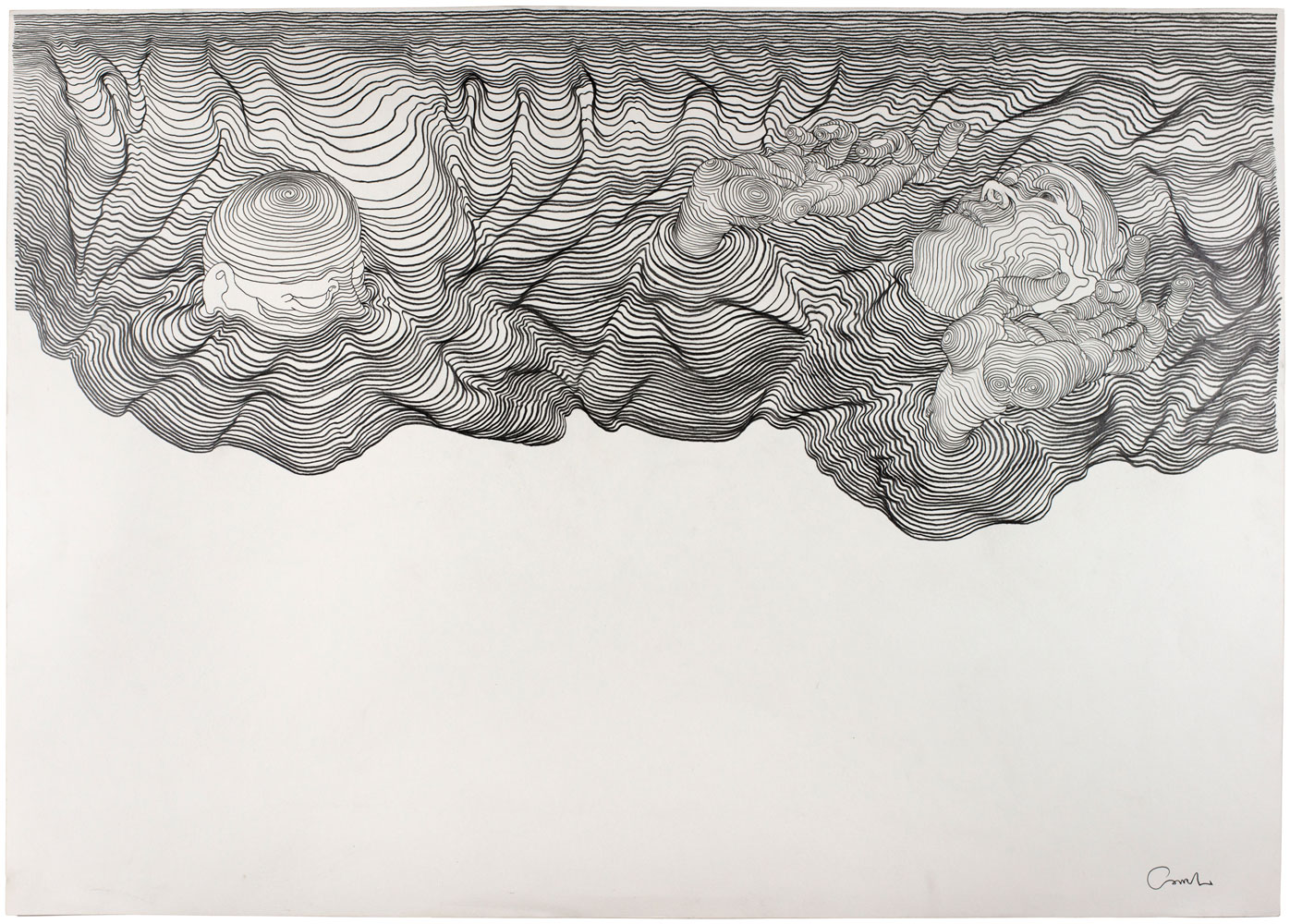The Human Geography of Carl Krull
I’ve recently seen some of Carl Krull’s latest works. His earlier drawings were nightmarishly brilliant. They suggested something of Gerald Scarfe’s illustrations for Pink Floyd’s The Wall (1982) along with the drawings of M.C. Escher in Hieronymus Bosch’s dark Garden of Earthly Delights (1490-1510). Krull’s most recent drawings demonstrate a rare curiosity as to what can be achieved with the simple pencil. Moreover, they’re successful engagements with the concept of geography in art. His latest drawings are composed of black lines—more wobbly than parallel—traversing a white canvas. They’re not straight but rather trace their own detours, diversions, and deviations. They’re neither as the crow flies and nor do they make a beeline. Instead, they’re as the crow really flies and as the bee really bumbles. Interestingly, if cartography offers us the shortest distance between two points, in doing so, it imposes an abstract plane on a complex terrain.
Krull has certainly traversed a complex terrain in recent years. Specifically, that wonderful and intriguing country that is the United States. His speech is in an amateur geographer or explorer’s register. He speaks of the ‘unchartered territory of the empty paper.’ He describes his drawings as ‘human seismographs.’ Of course, you’ll probably remember from your own geography classes that seismographs are those instruments that record the energy released by earthquakes in seismic waves. Krull’s are composed of the lines alluded to earlier, those black lines—more wobbly than parallel—that traversed the white canvas. Krull drew them ‘from the passenger seat of a moving car…during a road trip across the United States in 2013.’ In a way, then, these lines really do record the journey undertaken. They chart every bump in the road in their own detours, diversions, and deviations. You can see one being drawn below.
Krull says, ‘the roll of paper rotated on my lap, parallel to the spinning wheels, every bump in the road affected the flow of lines, making the drawings topographical maps of the journey itself.’ His foray into this new sort of drawing is his attempt to escape ‘the constraints or linear hatching and cross-hatching.’ He suggests that it’s actually ‘closer to sculpting.’
There’s another interpretation. In an earlier interview, Krull averred that his ‘work is figurative in nature and centers primarily around drawing, in almost all my drawings you will find the human form.’[i] This isn’t just mere pareidolia. It’s precisely this epiphenomenal aspect of the portraits (if one could call them that) that is so appealing. For these aren’t simply representations of someone or other. Instead, it’s as if they’re only the effect of their form expressed through the distortions introduced into (presumably) the straight lines that might have existed before that figure appeared. You never see the figure itself – only the effect of it. In a way, this is a really sublime distillation of the painter’s process—after all, isn’t this what all figurative art is? The effect of the model or subject mediated though the artist?
Quiver (2017)
Finally, we might be able to combine the geographical and subject. Krull said that in the process of drawing, ‘[w]hat had just been hidden seconds ago by the uncharted territory of the empty paper appears by the single line. It defines what is on either side, what is inside and what is outside.’ He emphasises that they ‘act as borders, separating from inside from outside.’
Alex Tabarrok’s ‘The Case for Getting Rid of Borders—Completely’ in The Atlantic (2015) begins by paraphrasing Rousseau: ‘man is born free, yet everywhere he is caged. Barbed-wire, concrete walls, and gun-toting guards confine people to the nation-state of their birth. But why?’[ii] Indeed, the arguments against borders comprise one of the few political quirks on which socialists and libertarians often agree. We might ask what Krull’s artworks contribute to this debate: Doesn’t the figure appear almost trapped by this variant of cartography? Some governments continue to ‘suppress entrepreneurship and promote intolerance, gender discrimination, or other bigotry…Closed borders compound these injustices,’[iii] says Tabarrok, thus ‘cementing inequality into place and sentencing their victims to a life of penury.’[iv] Krull’s work (advertently or inadvertently) brings some of these issues together in successfully intervening in current issues in geography and society through art.


